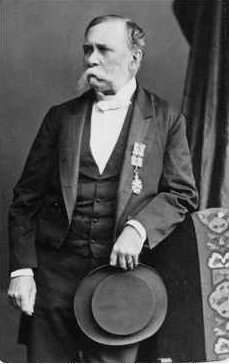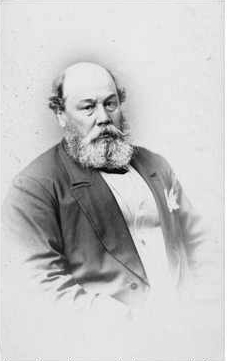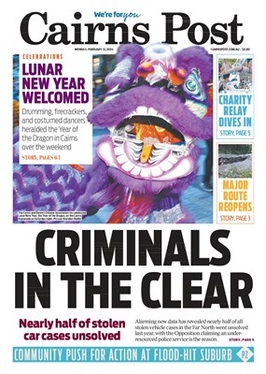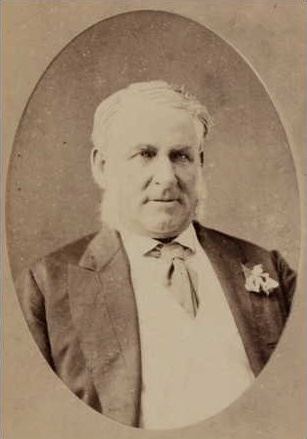
The Argus was an Australian daily morning newspaper in Melbourne from 2 June 1846 to 19 January 1957, and was considered to be the general Australian newspaper of record for this period. Widely known as a conservative newspaper for most of its history, it adopted a left-leaning approach from 1949. The Argus's main competitor was David Syme's more liberal-minded newspaper, The Age.

William Henry ('Will') Dyson was an Australian illustrator, artist and political cartoonist who achieved international recognition. He initially worked as a freelance artist in Australia, developing a specialty as a caricaturist, notably in The Bulletin magazine. In 1909 Dyson married Ruby Lindsay and the couple settled in London soon afterwards. As cartoonist for The Daily Herald newspaper, Dyson became widely known as an illustrator and commentator supporting progressive social reforms in Britain. His cartoons were often controversial, tackling difficult issues such as poverty, inequality and war, and were characterised by their biting wit and artistic impact. At the outbreak of World War I Dyson directed his scathing artwork at German militarism. In 1916 he applied to join the Australian forces at the Western Front as an artist. He was appointed an honorary lieutenant and joined the Anzac troops in France in January 1917. By the following May his appointment as Australia's first official war artist was formalised. After the death of his wife in March 1919 Dyson went through a difficult emotional period, during which his artistic output suffered. In late 1924 he returned to Australia after accepting a contract to work for the Herald publishing group in Melbourne. Dyson returned to England in 1930. He died in London in 1938, aged 57.

Francis Stacker Dutton CMG was the seventh Premier of South Australia, serving twice, firstly in 1863 and again in 1865.

Sir Arthur Blyth was Premier of South Australia three times; 1864–65, 1871–72 and 1873–75.

The Cairns Post is a major News Corporation newspaper in Far North Queensland, Australia, that exclusively serves the Cairns area. It has daily coverage on local, state, national and world news, plus a wide range of sections and liftouts covering health, beauty, cars and lifestyle. The Cairns Post is published every weekday and a weekend edition which is called The Weekend Post is published on Saturdays.

Robert Barr Smith was an Australian businessman and philanthropist in Adelaide, South Australia. He was a partner in Elder Smith and Company from 1863.

Harold Frederick Neville Gye, was a prolific Australian artist, cartoonist and caricaturist under the name Hal Gye and a writer of verse and short stories under James Hackston. Gye's artwork was published in a number of newspapers and magazines including The Bulletin, a journal with which he had a long association both as an artist and a writer. Gye was also a noted book illustrator. His artwork was featured in the books of C. J. Dennis beginning with The Songs of a Sentimental Bloke in 1915 and he also illustrated books of verse by Will H. Ogilvie and Banjo Paterson. As 'James Hackston' Gye wrote verse and autobiographical short stories published in The Bulletin and the Coast to Coast series of anthologies. In 1966 his collected short stories were published as Father Clears Out.
Ambrose Dyson, often known as Amb Dyson was an Australian illustrator and political cartoonist, born at Alfredton, near Ballarat, Victoria, Australia, the son of George Dyson, then a hawker and later a mining engineer, and his wife Jane, née Mayall. He was educated at state schools at Ballarat and South Melbourne. He was the older brother of the brilliant Will Dyson and the writer Edward Dyson.
William Mower Akhurst was an actor, journalist and playwright in Australia.

John Howard Clark was editor of The South Australian Register from 1870 to 1877 and was responsible for its Echoes from the Bush column and closely associated with its Geoffry Crabthorn persona.
Frederick Sinnett was a literary critic and journalist in colonial Australia.

Francis Thomas Dean Carrington, was a journalist, political cartoonist, and illustrator in colonial Australia.
Thomas Burr (1813–1866), surveyor and mine manager, was a British explorer and Deputy Surveyor General of South Australia 1839–46.
The Gadfly was a weekly magazine produced in Adelaide, South Australia between February 1906 and February 1909, founded by the poet C. J. Dennis.
The Telegraph was a newspaper in Adelaide, South Australia, founded in 1862, and merged with The Express to become The Express and Telegraph, published from 1867 to 1922.

Thomas Coleman Durkin was an Australian cartoonist and caricaturist based in Melbourne, active in the decades before Federation. He contributed to a variety of newspapers and illustrated journals during the 1870s and 1880s, including a series of caricatures of prominent Victorians published in the Melbourne newspaper, The Weekly Times. Fourteen lithographic prints from this series are now held by the National Portrait Gallery in Canberra. In the early 1890s Durkin was a part-owner with Edward Dyson of the illustrated Bull-Ant newspaper. From 1893 Durkin was employed as the Melbourne cartoonist for the Sydney-based Bulletin magazine, the first Australian-born artist to join its staff. He contributed a regular full-page of Melbourne-themed cartoons and caricatures, as well as smaller format illustrations. Durkin left The Bulletin in 1898, intending to travel to England, but his plans were abandoned through illness. Tom Durkin died of a liver disease in April 1902.
Sydney Punch (1864–1888) was a humorous and satirical magazine published in Sydney, New South Wales. Like Melbourne Punch and Adelaide Punch, it was modelled on Punch of London.
Edgar Ray was an English entrepreneur who launched two magazines in Australia, Melbourne Punch and Sydney Punch. On his return to England, he is credited with founding another, named Touchstone or The New Era.










